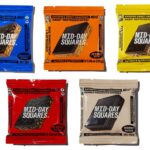Where are the next market opportunities for new products or services?
An unmet gap in a category or industry is an inadequately served space or underserved audience. You notice these gaps if you pay close attention, listen to consumers, and are hyper-aware of what is happening around you.
The curious and observant are often the first to see opportunistic patterns.
Broadly speaking, an unmet gap is a narrow opening that entrepreneurs often stumble upon when they witness an unmet market need.
- Why isn’t anyone selling cosmetics to men?
- Why isn’t there a vet that does house calls?
- Why hasn’t someone opened a bar for people who don’t drink alcohol but want a night out in the same environment?
- Why can’t I open a restaurant that is only for takeout and has no seating?
I See Market Opportunities
Business schools teach elaborate and complex techniques for mapping those opportunities using 2 X 2 diagrams. But so often, it is in daydreaming and wandering about that savvy individuals see opportunities. For example:
- Seeing how inconvenient it is to get a taxi. (Uber/Lyft)
- Have a spare room in your house that you could rent. (Airbnb)
- Restaurants that sell exclusively through delivery could share a common ghost kitchen. (Cloud Kitchens)
A gap usually happens at an intersection between two different markets or because a need isn’t adequately filled. Serial entrepreneurs tend to start businesses from personal experiences and inconveniences that need a solution.
Gaps, for example, can happen at the connecting point between toys and learning games, where a new product fills a need for fun and education. It can be by bringing new users to something that typically serves another demographic, like a massage parlor exclusively for senior citizens or barbershops on wheels that come to underserved neighborhoods.
How can you find these opportunities and observe the unmet gap that needs filling?
Starting Point
Gaps or market needs are often right before us, but we don’t see them. But these unmet needs usually come at inflection points where an existing business fails to meet an essential requirement by a customer. The gap is often in a narrow segment of a company that is unattended and requires attention.
To find gaps, ask these questions:
Failing
Where is a business failing at serving its customers or a particular segment of the market? Maybe they are adequate or reasonable in some business segments, but what part of their products or services fail to create delighted customers? For example, I wish someone would come to my house, pick up something I want to ship, carefully package it and find the best way to send it.
Ignoring
What niche is no one paying attention to? When you google a few keywords, and nothing shows up, it may mean that no one focuses on this area, and cracks of light might emerge that quietly whisper opportunity. I wish my dog could run free on my property like an invisible fence around it.
The founder of invisible fence, Richard Peck started his business because he was a salesman in Pennsylvania selling his company’s metal cutting and welding services.
“I traveled the United States and everywhere I went, I literally saw hundreds of dogs that had been slaughtered by cars. They were all over the roadway,” Peck said years later. “I loved dogs and knew there had to be a way to stop this.”
Richard Peck, Founder of The Invisble Fence Company
Return to the Past
Some business categories disappeared years ago and are just awaiting someone to refresh an old idea. Think of Pie Shops or Shoe Repair Stores. Gaps from the past might provide glimpses into a new need. I’d love to shop at an old-fashioned neighborhood hardware store instead of those gigantic big box stores where I’m greeted and served, not left alone to find things on my own.
Listen to the complaints
Do you ever ask friends and acquaintances what they wish someone could do for them to make life easier? Social media allows for many listening opportunities, but sometimes, something isn’t being satisfied when you hear a repeated complaining pattern. I wish my grocery store would deliver for me because I hate to shop.
Charity Water and Sweet Alexis
A company in Australia is selling bottled water for charity. Charity: Water is a non-profit that saw a gap in the market. How can you connect our obsession with bottled water with the market to help impoverished communities get clean water? They are quenching a need with a little bit of insight and inspiration.
Sweet Alexis is a company that saw an unmet gap. The founder realized a need for allergy-free cookies and baked goods. With over 12 million people suffering from allergies, no one filled this gap to focus on this segment. This company was founded by a woman whose daughter had severe allergic reactions to products from birth, and the unmet need was her own. Where could she find products to support her daughter?
A Close Shave
The Shave is a high-end barbershop specializing in custom shaves for men. This luxury end of the market was an unserved segment that an entrepreneur decided to clip. They offer memberships as if this was a club, so this gap is at an intersection between a barbershop and a men’s country club. This is a niche that no one was filling as it was a response to the idea that someone could own this moment in the day.
Openings
Not everybody sees the same opening and unmet gaps in the market. We might get so worried about HOW we will do something that we lose sight of WHY’s important reason. Finding market needs isn’t purely left or right brain in nature. It is often blurry and unclear. Yet, at its core should be the combination of your enthusiasm plus a few clear data points that illustrate the opening is objective.
Open your eyes. Notice. Listen.
Now –fill a gap.
You can set up a time to chat with me about your marketing challenges using my calendar. Email me jeffslater@themarketingsage.com Call me. 919 720 0995. The conversation is free, and we can explore if working together makes sense. Watch a short video about working with me.
Photo by John Tallent on Unsplash





